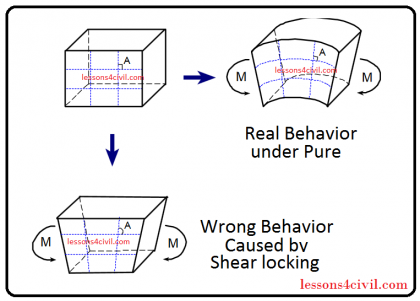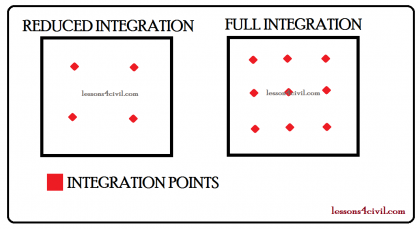Shear Locking Error
Shear locking error As it is said earlier, reduced integration elements are suffering hourglass effect due to their low bending stiffness. On the other hand higher bending stiffness of full integration elements might cause another numerical issue, called shear locking effect. Fully integrated first order elements, such as solid elements, Timoshenko beam elements, may exhibit […]






